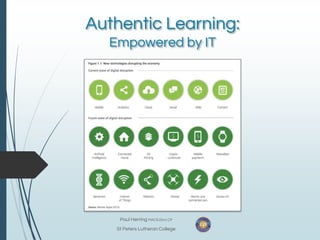The document discusses the concept of authentic learning and its significance in modern education, particularly in the context of preparing students for the future job market. It emphasizes the need for real-world, project-based learning experiences that foster essential 21st-century skills such as critical thinking, creativity, and collaboration. Examples from various educational initiatives demonstrate how authentic learning can enhance student engagement and produce meaningful outcomes.






































































